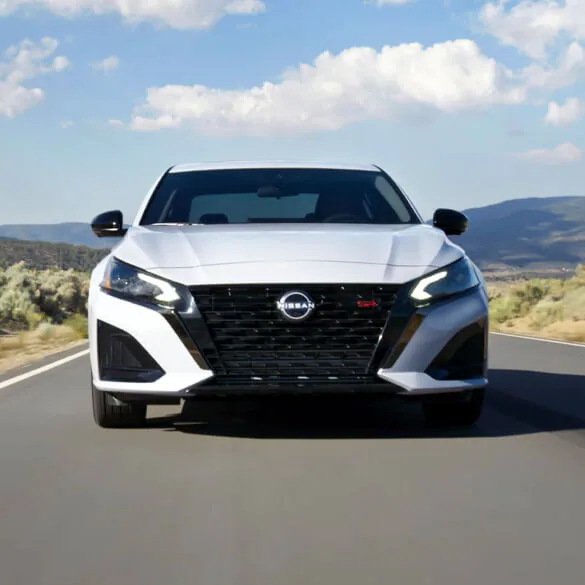If the engine in your Nissan Altima is beginning to show signs of age or wear, replacing it could be your best option to restore your vehicle’s performance. However, buying a brand-new engine can be a significant financial burden. The solution? Opt for a used engine.
A used engine can be a cost-effective way to keep your Altima running smoothly while providing excellent performance. But, how can you ensure that the used engine you’re purchasing is in good condition and a sound investment? This guide will take you through all the crucial steps and checks you should make before buying a used Nissan Altima engine.
1. Why Choose a Used Nissan Altima Engine?

The Nissan Altima is well-known for its longevity, comfort, and excellent fuel efficiency. Unfortunately, engines can deteriorate over time due to age, mileage, and lack of maintenance. Replacing a failing engine with a used one can be a more affordable option than purchasing a brand-new car. With proper maintenance, a used engine can offer many more years of reliable service and get your Altima back on the road.
2. Engine Compatibility: Why It’s Essential
Before making your purchase, ensure the used engine you’re considering is compatible with your vehicle. Here are a few factors to keep in mind:

- Engine Type and Size: The Nissan Altima comes with various engine options, such as a 2.5L 4-cylinder or a 3.5L V6. Be sure the used engine matches your current engine’s type and size.
- Model Year Compatibility: Engines can have slight differences depending on the model year. For example, a 2010 Altima engine may differ slightly from a 2015 model, even if both have the same engine size. Make sure the used engine aligns with your car’s specific year.
- Transmission Compatibility: Whether your Altima has an automatic or manual transmission, the engine must be compatible with your transmission. Using an engine that’s not designed for your specific transmission type can lead to costly repairs.
3. Inspect the Engine’s Physical Condition
Even if the engine is compatible with your Altima, it’s critical to assess its physical condition. Here’s what to check for:
- Visible Damage: Carefully inspect the engine block for cracks, dents, or any signs of previous accidents. Physical damage can negatively affect the engine’s durability and performance.
- Leaks: Check for any oil, coolant, or fuel leaks. Leaking fluids often indicate worn seals, gaskets, or hoses—parts that may require costly replacements.
- Rust and Corrosion: Excessive rust around the engine components, such as the engine block or exhaust manifold, can suggest the engine has been exposed to moisture or poor storage conditions. Rust can severely impact the engine’s efficiency and lifespan.
- Exhaust System: Examine the exhaust system for any holes, cracks, or signs of excessive wear. A damaged exhaust system can affect engine performance and efficiency.
4. Mileage: Does It Tell the Full Story?
Mileage is often one of the first things buyers look at, but it’s not the only indicator of an engine’s health. Although lower mileage usually means less wear, a well-maintained, high-mileage engine can still have a lot of life left. Here’s what to keep in mind:
- High vs. Low Mileage: Engines with high mileage may have experienced more wear, but if the engine has been maintained properly, it can still serve you for many years.
- Maintenance Records: Ask the seller for maintenance records to see if the engine has been serviced regularly. Proper upkeep, such as oil changes and fluid checks, can significantly extend an engine’s lifespan, even with high mileage.
- Previous Ownership: Check how many previous owners the engine has had. Multiple owners could imply the engine has had issues, but if it has been well cared for, it might still be a solid option.
5. Perform a Compression Test
A compression test is one of the best methods for evaluating an engine’s internal health. It measures the pressure in each cylinder to ensure the engine is in good working condition.
- Uniform Compression: A healthy engine should have uniform compression across all cylinders. Significant differences in compression levels may suggest worn-out parts, such as piston rings or valves.
- Low Compression: Low compression in one or more cylinders can indicate internal damage or excessive wear, which can lead to costly repairs.
6. Listen for Unusual Sounds
Start the engine (if it’s already installed) and listen carefully for any strange noises:
- Knocking or Tapping: These sounds often indicate issues like worn-out bearings or other internal engine problems that might require costly repairs.
- Grinding Noises: Grinding sounds could point to issues with the timing chain or a failing transmission—both of which could be expensive to fix.
7. Check for Smoke Emissions
Once the engine is running, observe the exhaust for smoke. The color of the smoke can provide valuable insight into the engine’s condition:
- Blue Smoke: Blue smoke generally indicates that the engine is burning oil, which could be due to worn-out piston rings or valve seals.
- White Smoke: White smoke typically indicates coolant is entering the combustion chamber, often caused by a blown head gasket.
- Black Smoke: Black smoke suggests the engine is burning too much fuel, which may be due to problems with the fuel injectors or air filters.
8. Timing Belt or Chain: A Critical Component
The timing belt or chain is vital to the engine’s operation. If the timing belt hasn’t been replaced recently, it could snap, resulting in serious damage to the engine.

- Timing Belt: If the engine uses a timing belt, check when it was last replaced. Failure to replace it on time could cause catastrophic engine failure.
- Timing Chain: While timing chains are more durable, they can still wear out. Listen for unusual sounds that may indicate a failing timing chain.
9. Consult a Professional Mechanic
If you’re unsure about the engine’s condition, it’s a good idea to hire a professional mechanic for a detailed inspection. A mechanic can perform a compression test, listen for abnormal sounds, and identify any hidden issues that might not be immediately apparent.
10. Warranty and Return Policy: Protect Your Investment
Make sure the seller offers a warranty or return policy for the used engine. A trustworthy seller should provide some form of warranty to give you peace of mind. This protects you from unexpected issues that may arise after installation.
Conclusion
Purchasing a used Nissan Altima engine can be a smart and cost-effective choice, but it’s important to take the necessary precautions. By thoroughly checking engine compatibility, assessing its physical condition, reviewing maintenance history, and conducting crucial tests, you can make a more confident decision.
At USA Auto Parts, we offer a wide selection of high-quality used Nissan Altima engines that are tested for reliability and performance. Our team is here to assist you every step of the way, from selecting the right engine to ensuring proper installation.
Ready to get your Nissan Altima back on the road? Visit USA Auto Parts today and explore our inventory!




